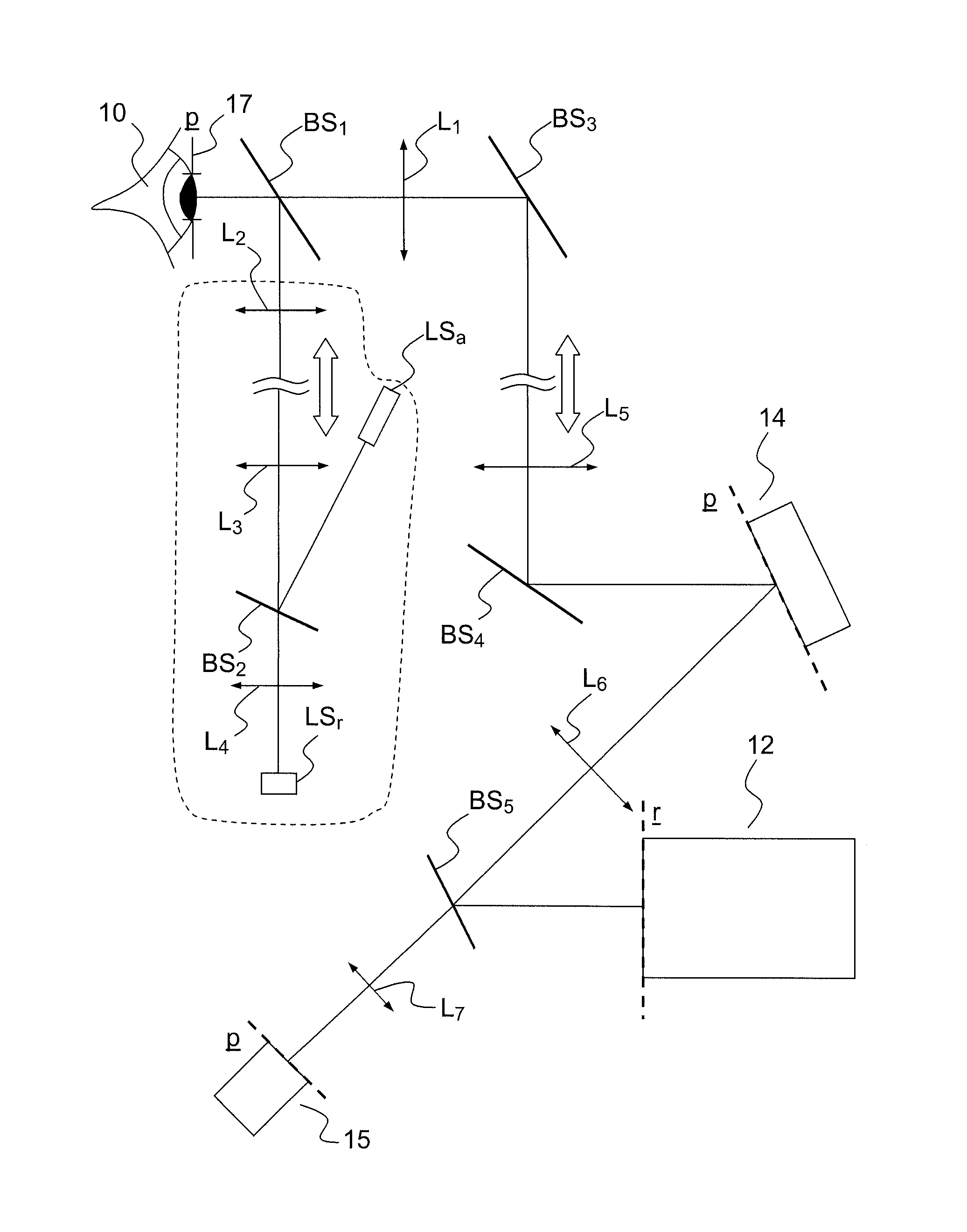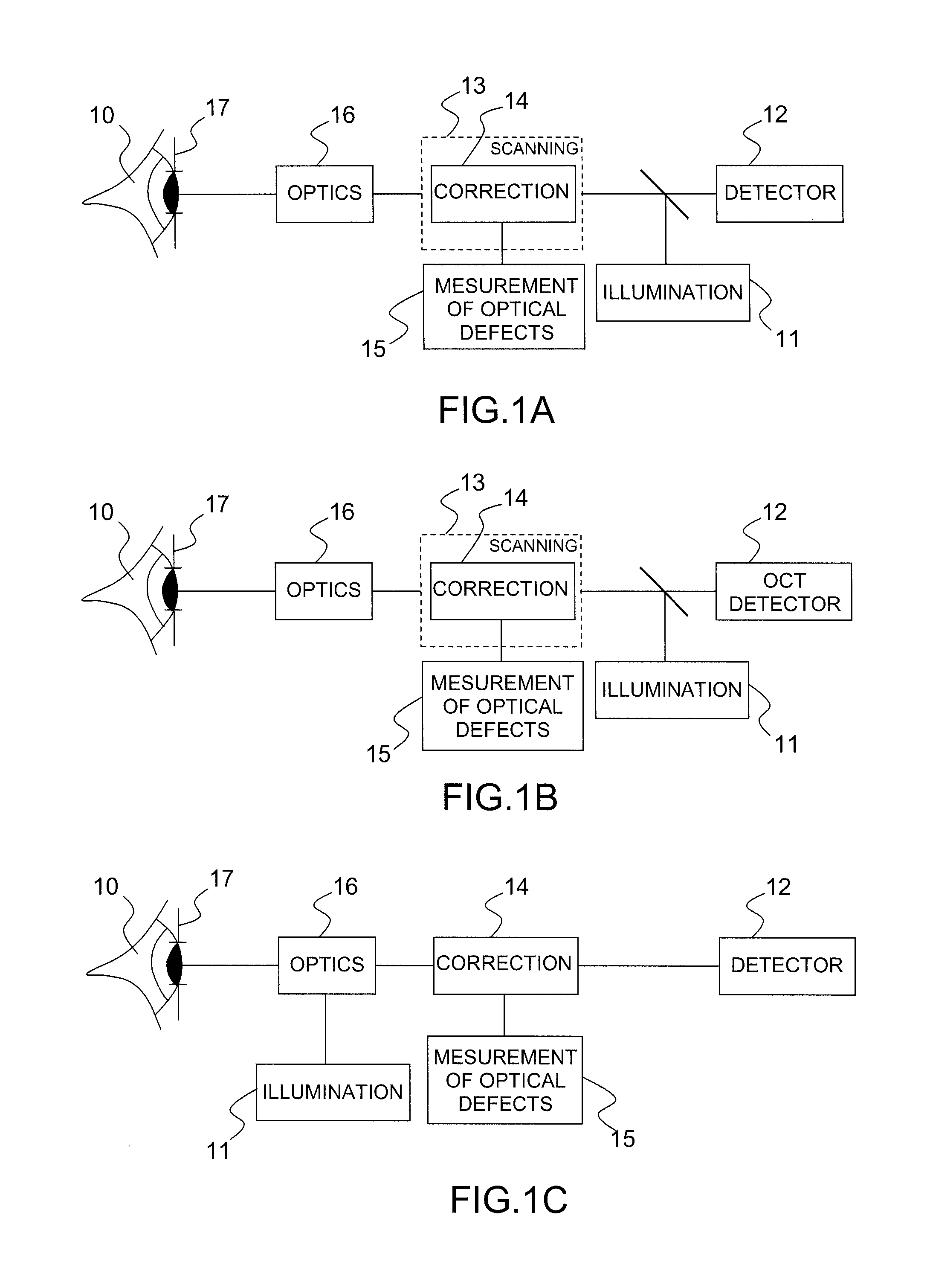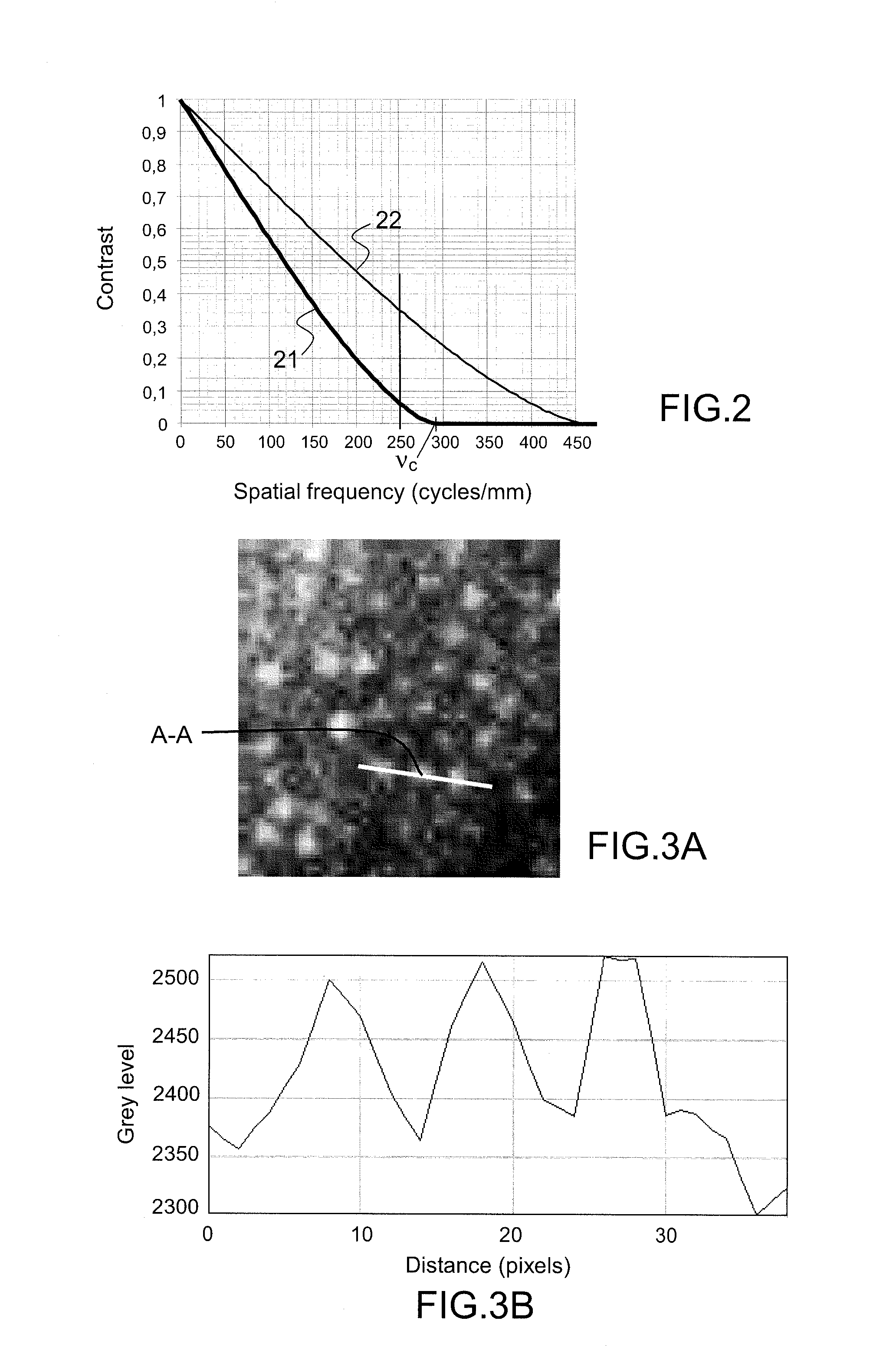Method and device for high-resolution retinal imaging
a retinal imaging and high-resolution technology, applied in the field of high-resolution retinal imaging methods and devices, can solve the problems of optical system defects not only of the eye, but also of the imaging system optical system, and achieve the effects of improving the signal-to-noise ratio of the retina image-forming device, improving the uniformity of light intensity, and improving the contrast of the retina microstructur
- Summary
- Abstract
- Description
- Claims
- Application Information
AI Technical Summary
Benefits of technology
Problems solved by technology
Method used
Image
Examples
Embodiment Construction
[0052]FIG. 2 represents a curve (reference 21) illustrating the modulation transfer function as a function of the frequency (given in cycles per millimeter) in a perfectly corrected optical system limited by diffraction. The value νc is the cut-off frequency, that is to say the frequency at which the contrast is zero. The cut-off frequency νc is given by:
[0053]υc=ΦλF(1)
[0054]Where φ is the diameter of the input pupil of the optical system, F is the focal length of the optical system and λ is the wavelength.
[0055]In a retinal imaging system of the type of those described previously, the aim is to form the image of structures of the retina, for example of the cones, photoreceptors with the dimension in proximity to the center of the fovea that is of the order of 2 μm and which are distributed in mosaic fashion with a spatial period of approximately 4 μm. Detecting the structures entails being able to resolve, using the imaging device, a spatial frequency of 250 cycles per millimeter...
PUM
 Login to View More
Login to View More Abstract
Description
Claims
Application Information
 Login to View More
Login to View More - R&D
- Intellectual Property
- Life Sciences
- Materials
- Tech Scout
- Unparalleled Data Quality
- Higher Quality Content
- 60% Fewer Hallucinations
Browse by: Latest US Patents, China's latest patents, Technical Efficacy Thesaurus, Application Domain, Technology Topic, Popular Technical Reports.
© 2025 PatSnap. All rights reserved.Legal|Privacy policy|Modern Slavery Act Transparency Statement|Sitemap|About US| Contact US: help@patsnap.com



